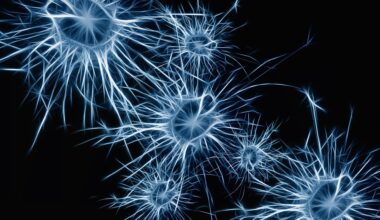“We thought we were studying the simplest form of learning,” says Dr. Catharine Rankin. “But it turns out the ‘simplest form of learning’ is not so simple after all.”
For Dr. Rankin, a leader in the field of habituation research, understanding the way that habituation occurs in a simple organism has implications for a range of brain disorders in humans. C. elegans, the worms researchers in the Rankin lab study to understand learning and brain development, are nematodes that are widely used in neuroscience research for the similarities between their cell biology and that of humans. Much of what occurs in the worm cell is homologous, or comparable, to similar processes in human biology.
Habituation, thought to be a rudimentary form of learning through experience, is a cognitive building block on which our ability to selectively tune in or tune out repetitive stimuli is built. Without it, we’d struggle to filter out the noise of multi-sensory input and ignore unhelpful stimuli.
Habituation is different from sensory adaptation in sensory adaptation occurs at the receiving end of a sensory neuron where the stimulus is transduced (or transformed) into neural signals, and habituation occurs downstream of that at synapses from the sensory neuron or at interneurons. In contrast to sensory adaptation, habituation is readily reversible and related to attention.
If sensory adaptation has occurred the only way responding will occur is when enough time has passed for the animal to recover from exposure. In contrast if a sensory circuit is habituated the response can recover immediately if something arousing happens; this supports the idea that habituation is an attentional process.
Habituation deficits, or abnormalities in an individual’s ability to “free up” neuronal resources by tuning out that which is distracting or irrelevant, are characteristic of a number of neuropsychiatric disorders, including Autism Spectrum Disorders (ASD), schizophrenia, migraine, and Huntington’s disease.
“What’s interesting,” says Dr. Rankin, “is that organisms can habituate to stimuli which are potentially deadly.”
ASH is one of a few classes of neurons responsible for detecting dangerous stimuli in C. elegans worms, and research has shown that ASH responses showed habituation. Researchers in the Rankin lab found that the responses to repeated stimulation of the pair of ASH nociceptive sensory neurons are modulated by a specific gene, one that encodes the neuropeptide receptor PDFR-1.
Using the lab’s innovative Multi-Worm Tracker, a high-throughput device designed to measure a large number of distinct variables at once, researchers used a blue light-activated ion channel to directly trigger the ASH neurons and studied how worms with and without PDFR-1 responded to a burst of blue light that simulated danger.
When the ASH neurons were stimulated, the worms moved backwards. With repeated stimulation, the duration of the backwards movement decreased and the latency to respond increased. After repeated exposure to a potentially dangerous stimulus, worms gradually moved farther and farther away from the site where they were stimulated.
However, the worms without the PDFR-1 gene showed less forward movement between stimuli and did not increase the distance they moved during the habituation period. Without PDFR-1, the worms produced a maladaptive response to danger.
“The receptor doesn’t seem to affect the worm’s initial response to danger,” says Dr. Rankin. “The change seems to occur through repeated responses, indicating a plasticity of learning behind complex behaviour – there’s a bigger story here than simply defining habituation as one aspect of behaviour.”
“What this shows is that other aspects of behaviour may be being affected by learning achieved through habituation,” says Dr. Rankin. “Learning is reflected not just in retreating, but in modifying other behaviours to avoid dangerous stimuli.”
Researchers have long thought that habituation is similar across species – that there are a set of behavioural “rules” for responding to repeated stimulation that include only the response observed. Dr. Rankin has shown that this may not always be true, and that habituation may serve purposes beyond tuning in or tuning out a given stimulus.
“We’ve shown that the end point of habituation may not simply be a reduction in response, as it’s commonly reduced to,” says Dr. Rankin. “It’s not a single behaviour, but part of an overall strategy that allows the worm to achieve some longer-term outcome, such as avoidance of stress or threat.”
By understanding the suite of behavioural components that make up the response as well as behaviors between responses, researchers can take a more holistic look at the effects or difficulties with learning and adaptation in patients with disorders associated with habituation-deficits.
“We’re seeing that we can’t focus on a single response component in order to truly understand behaviour, and that’s only going benefit our research going forward.”
Read more: Habituation as an adaptive shift in response strategy mediated
by neuropeptides


